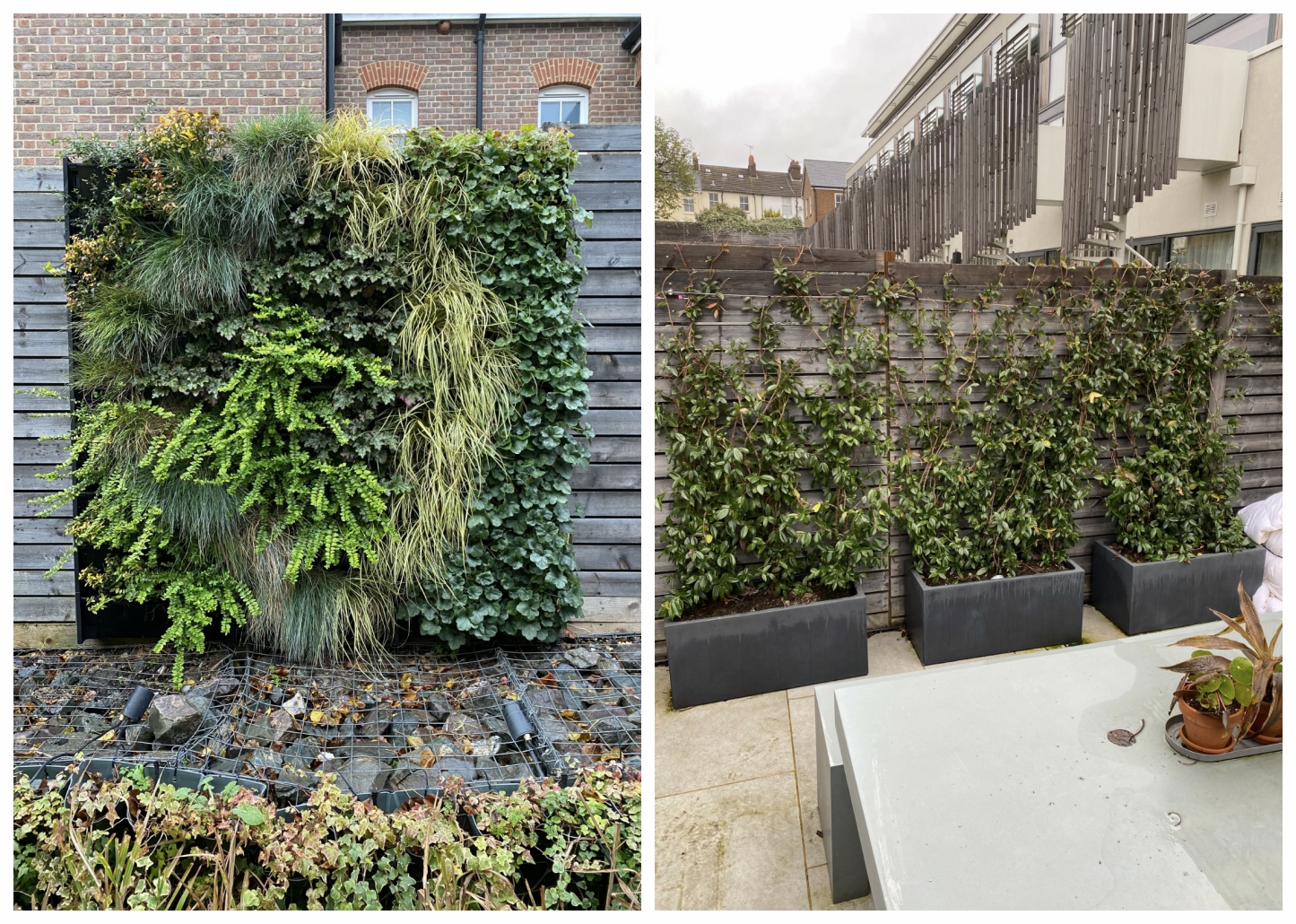
12 Dec What is a Green Wall? We Can Explain
You may believe that you know the answer to the question ‘what is a green wall?’. And at Rosewood Living Walls we certainly ought to know! However, you might find it interesting to hear that, strictly speaking, even ivy growing up a fence could be called a green wall. Any planting growing on a vertical surface instead of a flat horizontal one could be called a living wall.
What we mean by the phrase ‘living wall’
However, in today’s parlance, a green wall or a living wall doesn’t cover all these options. Nowadays the terms usually refer to a vertical garden that someone has deliberately planted in that way. They would exclude plants covering a wall by growing naturally and opportunistically. The terms also indicate that the growing medium for the plants is spread over the vertical surface. This medium might be soil, or something else. Sometimes it is contained in rigid troughs, as with the PlantBox system that we use. However, other methods do exist.
Why does a vertical growing medium make a difference?
The point about having a vertically placed growing surface is that the plants covering the wall don’t have to be climbers. Ivy, clematis etc can cover a wall by growing upwards from where their roots are in the ground. However, with soil or other medium covering the vertical surface, a huge variety of plants can be used. This allows a living wall designer to come up with a creative planting scheme that provides colour and texture throughout the year.
Examples of both kinds
Our photos show two examples of our work: climbers (jasmine) planted in a container on the ground that are growing up the vertical surface, and a ‘proper’ living wall with a growing system that is stacked vertically, allowing an exceptionally wide choice of plants. The two photos are of the same garden, as we created a living wall for the client and also planted up the containers with climbers. Both look great!

